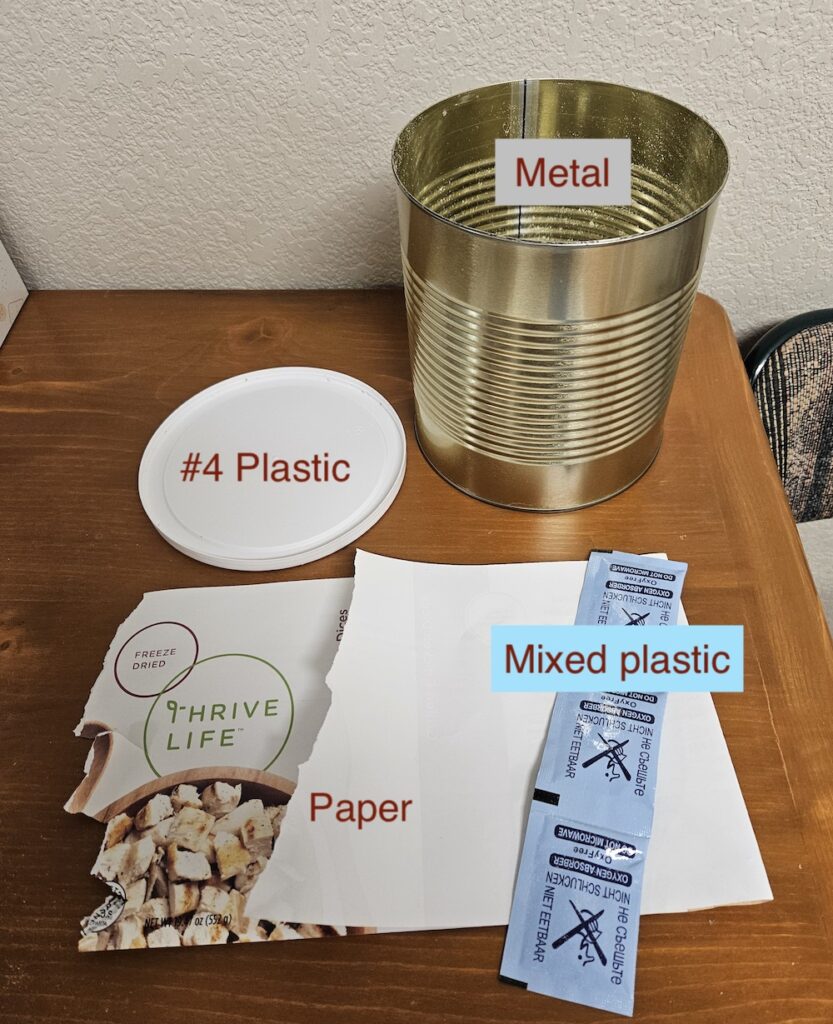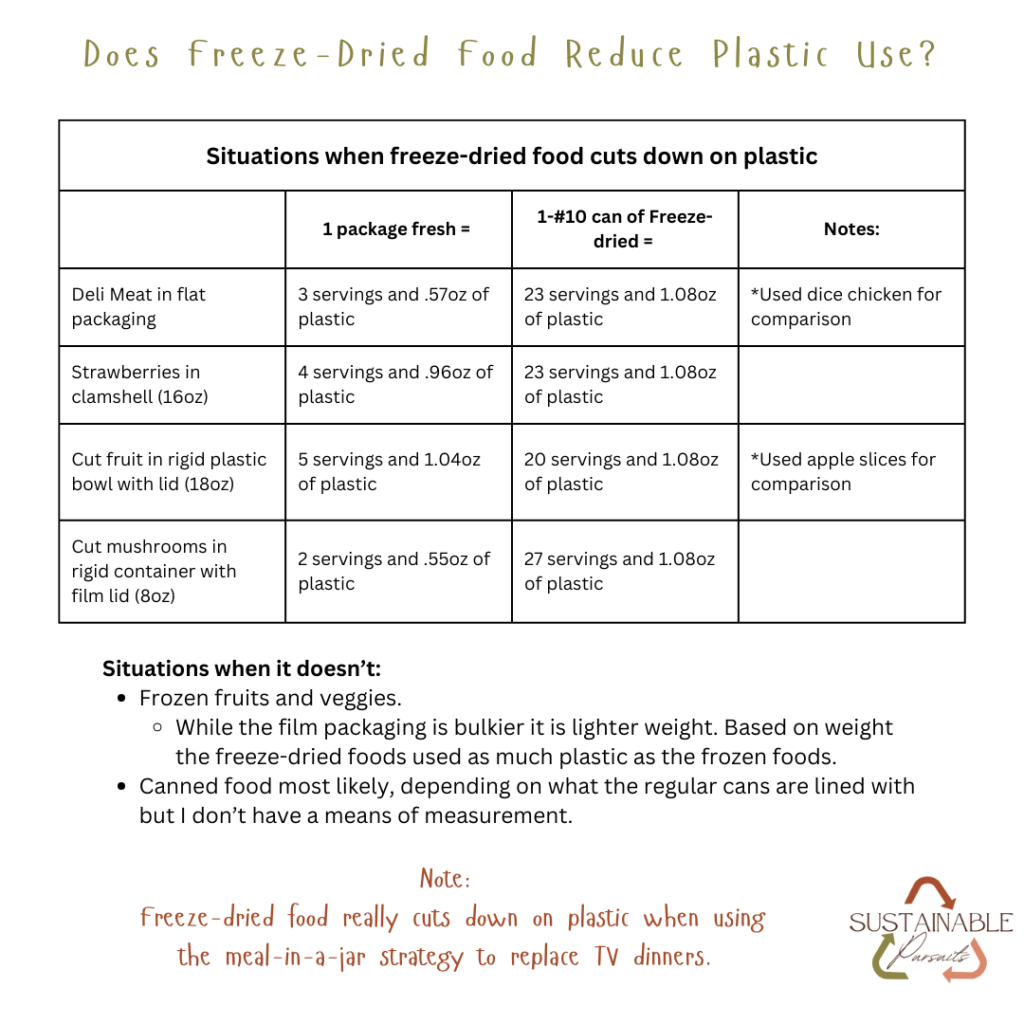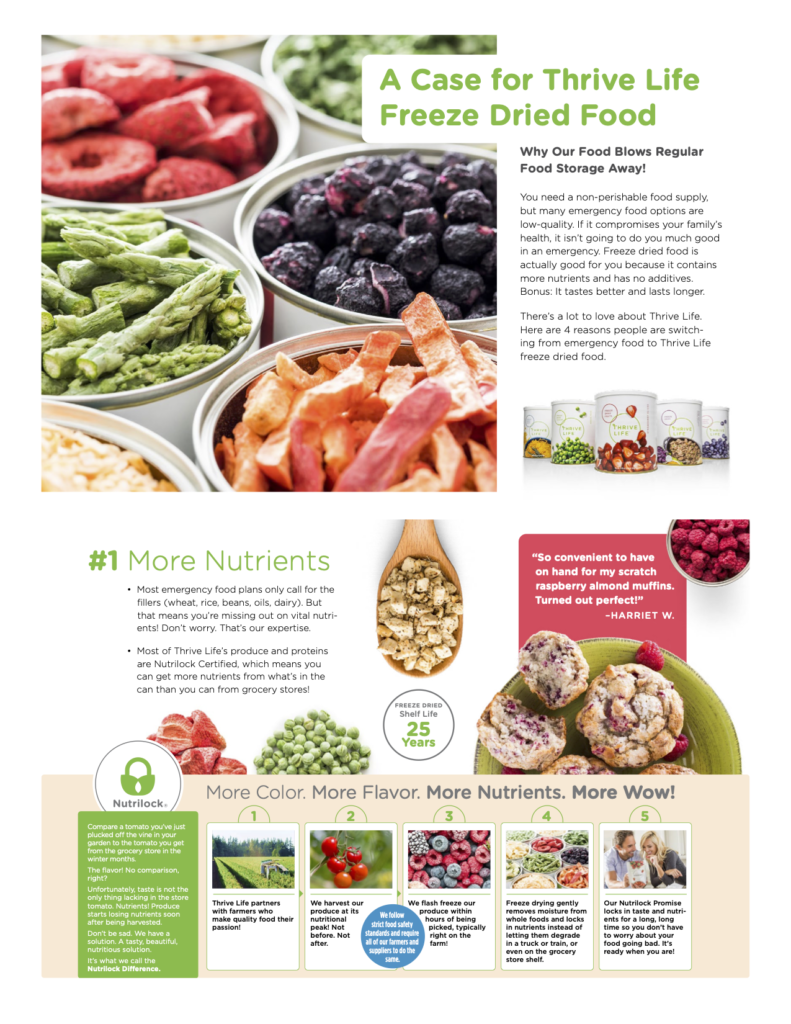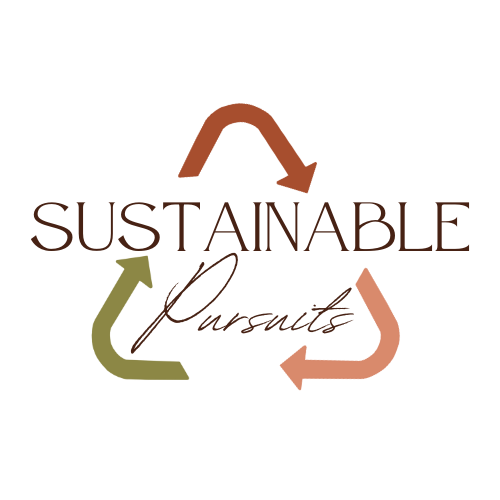I’ll be honest, I don’t really love to cook. So I’m always looking for quick and easy meals. Which is what got me started with freeze-dried food. I love being able to make meals-in-a-jar ahead of time for busy days. I also love having meats and veggies on hand in case I didn’t get to the store. However, it wasn’t until I started doing monthly plastic-free challenges that I realized freeze-dried foods have also been helping me cut down on plastics.
After looking into this plastic reduction more, I can say that there are some scenarios where freeze-dried foods really help cut down on plastic and some where they don’t. I’ll go over what those scenarios are and how best to use your freeze-dried foods as part of a more sustainable pantry.
What is freeze-dried food?
First, let’s be clear that dehydrated and freeze-dried foods are not the same. The processing methods are different which results in different textures and nutritional quality. The drying process for dehydrated foods removes water content by exposing foods to heat for a longer period. In the freeze-dried drying process, foods are exposed to low/freezing temperatures and have the water removed using sublimation. Sublimation is when a substance (in this case water) goes straight from a frozen state to a gas state. So by using vacuums to adjust the pressure, the water is removed from the food.
Because more water is removed with the freeze-drying process, freeze-dried foods can be stored longer than dehydrated foods. Freeze-dried foods also reconstitute quickly which makes them great for just-add-water meals. One of the biggest benefits is that the freeze-drying process leaves foods structurally intact having minor effect on the food’s nutritional quality1. Studies show that freeze drying is among the best food preservation methods for maintaining nutritional quality2.
How does freeze dried food cut down on plastic?

You can get freeze-dried food in metal cans
Freeze-dried foods typically come in cans or pouches. The company I like (Thrive Life Foods*) has all their fruits, veggies, meats, sauces, and more in metal cans that are BPA free. With the exception of the meals, all the foods come in metal cans. Metals have a much better track record when it comes to being recycled and are considered infinitely recyclable.
But if you’re cutting down on plastic, you also have to be careful about the liners in metal cans. Thrive Life Foods uses an epoxy phenolic gold lining for their cans which is BPA free. And from what I can tell, it doesn’t effect the can’s recyclability.
Scenarios where freeze-dried does and doesn’t cut down on plastic
I’ll admit, at one point I did think that FD (freeze-dried) food cut down on plastic all across the board. But while the cans are metal, the lids and oxygen absorbers (sometimes 1-3 absorbers per can) are plastic. The lids are plastic #4, which my recycling center takes but the absorbers have to go into the trash. Even with the lid and the oxygen absorbers, this still doesn’t seem like much plastic compared to most other food packaging. Then I started weighing all the plastics to compare them.
Here’s what I found…
For the most part, YES, the cans of FD food do greatly reduce the amount of plastic used, but not all of the time. In some scenarios they greatly reduce the amount of plastic waste but in others they were about equal. Below is a chart I put together to compare the freeze-dried food packaging with different types of produce packaging. The results are based on the weight of any plastic packaging used. While the chart doesn’t cover every food item, it does give a general idea for which packaging uses more or less plastic.

*Serving size is 1/2 cup
*Used Thrive Life FD diced chicken for deli meat comparison
*Used Thrive Life FD apple slices for cut fruit comparison
Scenarios where freeze-dried really cuts down on plastic
Based on the chart, freeze-dried foods significantly decrease plastic waste when compared to the rigid plastic containers and clamshells for fruits or veggies. The times FD food didn’t reduce plastic, or was about equal, was with frozen fruits and vegetables that are typically packaged in plastics bags.
But keep in mind how versatile freeze-dried foods can be for your food storage and meal prepping. You’ll soon find other ways that these foods help cut down on plastic.
I’m specifically thinking of the meals-in-a-jar strategy for this month’s challenge of replacing TV dinners/microwave meals. By making your own meals-in-a-jar you can have a pantry full of just-add-water meals in reusable containers. Rather than a freezer full of TV dinners loaded with plastics.
But is freeze-dried food healthy?
As far as freeze-dried food companies go, I’m only familiar with Thrive Life’s process. “Most of Thrive Life’s produce and proteins are Nutrilock Certified, which means you can get more nutrients from what’s in the can than you can from grocery stores!” (Thrive Life). Here’s the PDF of their info brochure.
Many fresh foods at the store have been harvested early and travel long distances, both of which reduce the food’s nutritional quality. Unlike with store fresh foods, Thrive Life Foods are ripened to peak maturation and flash frozen within hours of being harvested. This helps to minimize the loss of vital nutrients in the food. Here’s an infographic to explain more about the process.

Why Freeze-dried food should be part of your pantry
As I said earlier, there are many ways that freeze-dried foods can help reduce plastics in your kitchen. They also help make life easier because they are a shelf stable food that lasts a long time. You can use freeze-dried foods for easy meal prep or tasty make-ahead meals. Not only does this have the potential to cut down on plastic, it is definitely a time saver at meal time. This is why I recommend freeze-dried foods as a part of your sustainable pantry.
- Bhatta S, Stevanovic Janezic T, Ratti C. Freeze-Drying of Plant-Based Foods. Foods. 2020 Jan 13;9(1):87. doi: 10.3390/foods9010087. PMID: 31941082; PMCID: PMC7022747.
- Wikipedia contributors. “Freeze drying.” Wikipedia, The Free Encyclopedia. Wikipedia, The Free Encyclopedia, 10 Oct. 2024. Web. 23 Oct. 2024.
*I will only recommend products that I personally use and love and hope can be of benefit to others in their sustainable journeys. (*) indicates an affiliate link where Sustainable Pursuits llc may receive a small compensation for product recommendations. This helps to support Sustainable Pursuits llc and my ability to share these experiences with you! See full affiliate disclosure.

